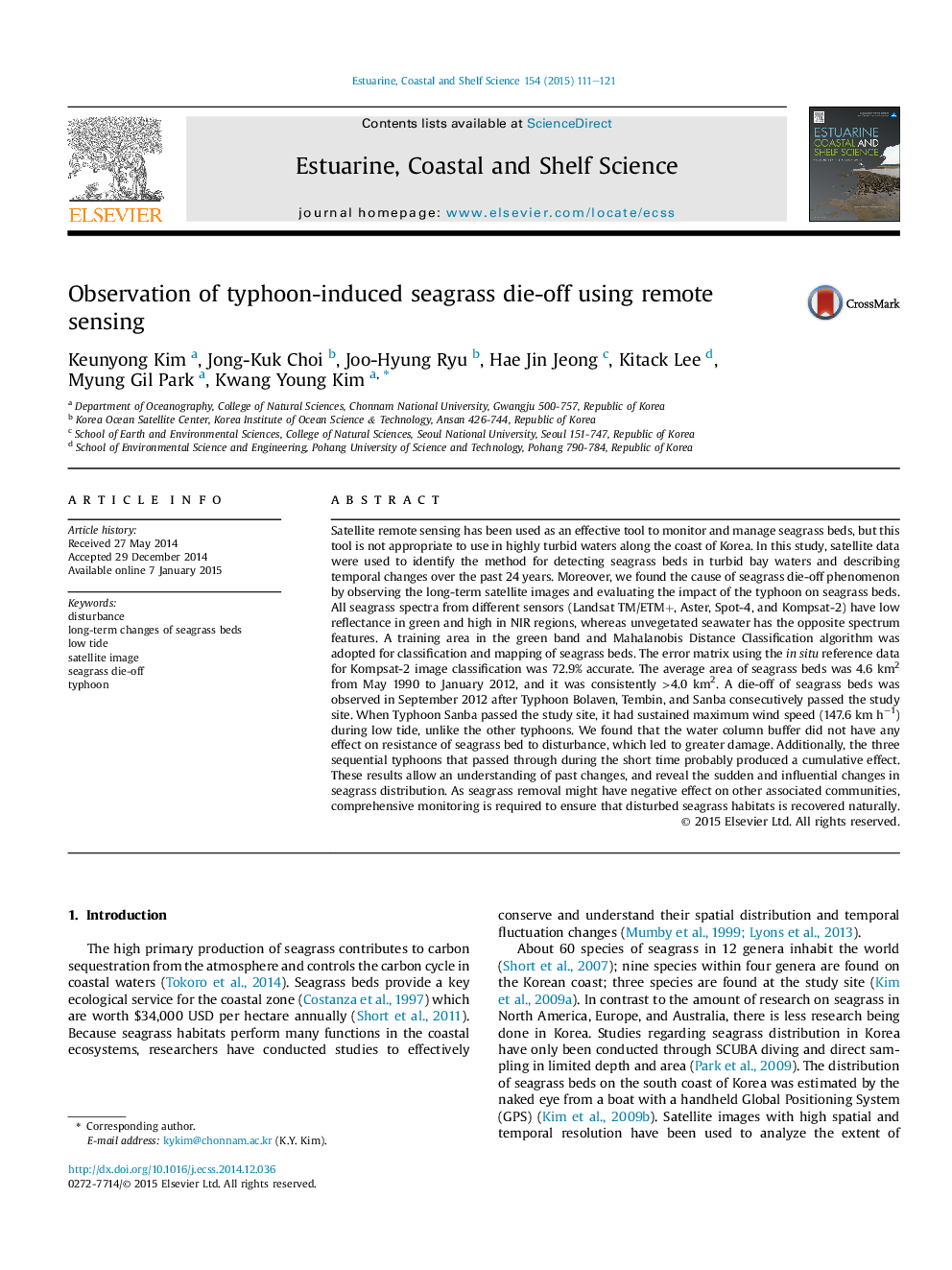| کد مقاله | کد نشریه | سال انتشار | مقاله انگلیسی | نسخه تمام متن |
|---|---|---|---|---|
| 4539518 | 1626642 | 2015 | 11 صفحه PDF | دانلود رایگان |
Satellite remote sensing has been used as an effective tool to monitor and manage seagrass beds, but this tool is not appropriate to use in highly turbid waters along the coast of Korea. In this study, satellite data were used to identify the method for detecting seagrass beds in turbid bay waters and describing temporal changes over the past 24 years. Moreover, we found the cause of seagrass die-off phenomenon by observing the long-term satellite images and evaluating the impact of the typhoon on seagrass beds. All seagrass spectra from different sensors (Landsat TM/ETM+, Aster, Spot-4, and Kompsat-2) have low reflectance in green and high in NIR regions, whereas unvegetated seawater has the opposite spectrum features. A training area in the green band and Mahalanobis Distance Classification algorithm was adopted for classification and mapping of seagrass beds. The error matrix using the in situ reference data for Kompsat-2 image classification was 72.9% accurate. The average area of seagrass beds was 4.6 km2 from May 1990 to January 2012, and it was consistently >4.0 km2. A die-off of seagrass beds was observed in September 2012 after Typhoon Bolaven, Tembin, and Sanba consecutively passed the study site. When Typhoon Sanba passed the study site, it had sustained maximum wind speed (147.6 km h−1) during low tide, unlike the other typhoons. We found that the water column buffer did not have any effect on resistance of seagrass bed to disturbance, which led to greater damage. Additionally, the three sequential typhoons that passed through during the short time probably produced a cumulative effect. These results allow an understanding of past changes, and reveal the sudden and influential changes in seagrass distribution. As seagrass removal might have negative effect on other associated communities, comprehensive monitoring is required to ensure that disturbed seagrass habitats is recovered naturally.
Journal: Estuarine, Coastal and Shelf Science - Volume 154, 5 March 2015, Pages 111–121
